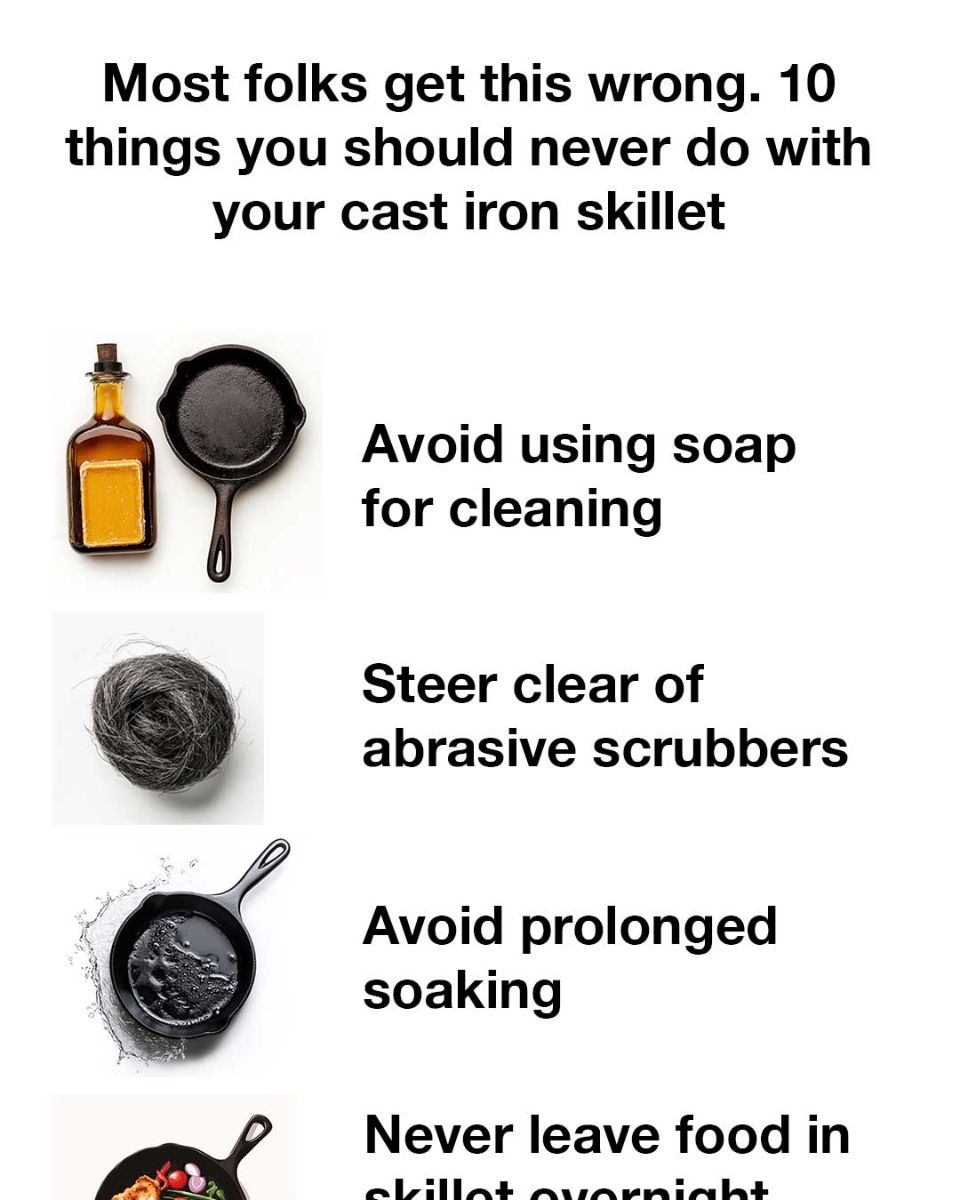6. Ensuring Proper Seasoning Techniques
Seasoning is the process of applying a thin layer of oil to the skillet and heating it until it polymerizes, creating a non-stick surface. To season your skillet, apply a thin coat of vegetable oil or flaxseed oil, then bake it upside down in the oven at 375°F (190°C) for an hour. Allow it to cool in the oven to ensure the oil bonds to the surface effectively.
7. Avoiding Rapid Temperature Changes
Rapid temperature changes can cause cast iron to crack. Avoid placing a hot skillet under cold water or moving it from a hot stove directly to a cold surface. Instead, allow the skillet to cool gradually before cleaning it. This practice helps maintain the structural integrity of the cast iron.
8. The Importance of Drying Your Skillet Thoroughly
After washing your cast iron skillet, it’s crucial to dry it thoroughly to prevent rust. Use a towel to remove excess water, then place the skillet on a stove over low heat to evaporate any remaining moisture. Once dry, apply a light coat of oil to the surface to protect it from humidity and oxidation.
9. Storing Your Cast Iron Skillet Correctly
Proper storage is key to maintaining your cast iron skillet. Store it in a dry place with good air circulation to prevent moisture buildup. If stacking with other cookware, place a paper towel between the skillet and other items to protect the seasoning. Hanging the skillet is also an excellent option to avoid scratches and maintain its condition.
Conclusion: Embracing the Longevity of Cast Iron
With the right care and attention, a cast iron skillet can last for generations, becoming a cherished kitchen heirloom. By avoiding common mistakes and following proper maintenance techniques, you can enjoy the benefits of this versatile cookware for years to come. Embrace the tradition of cast iron cooking and pass down the knowledge of its care to future generations.
